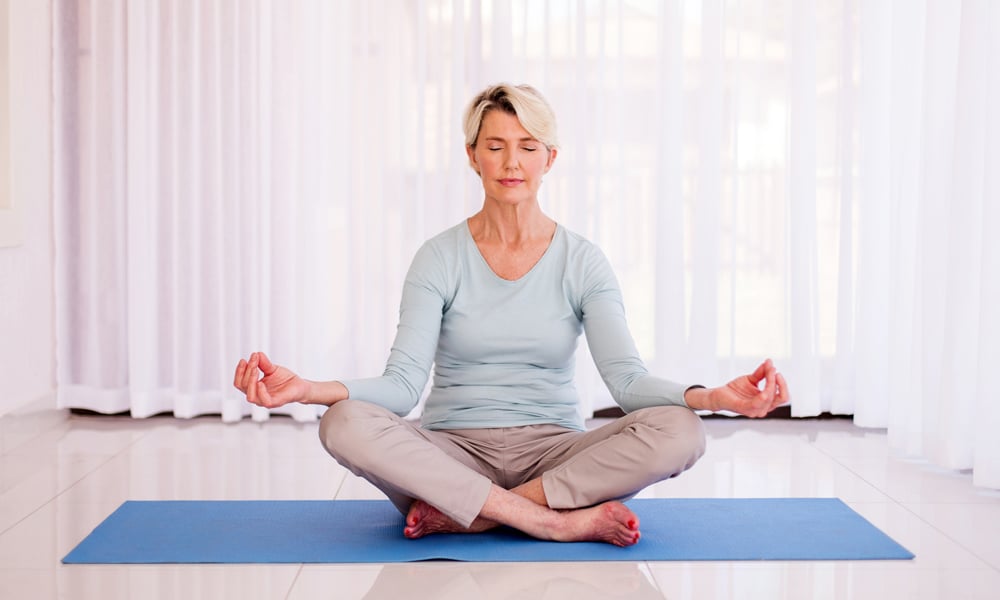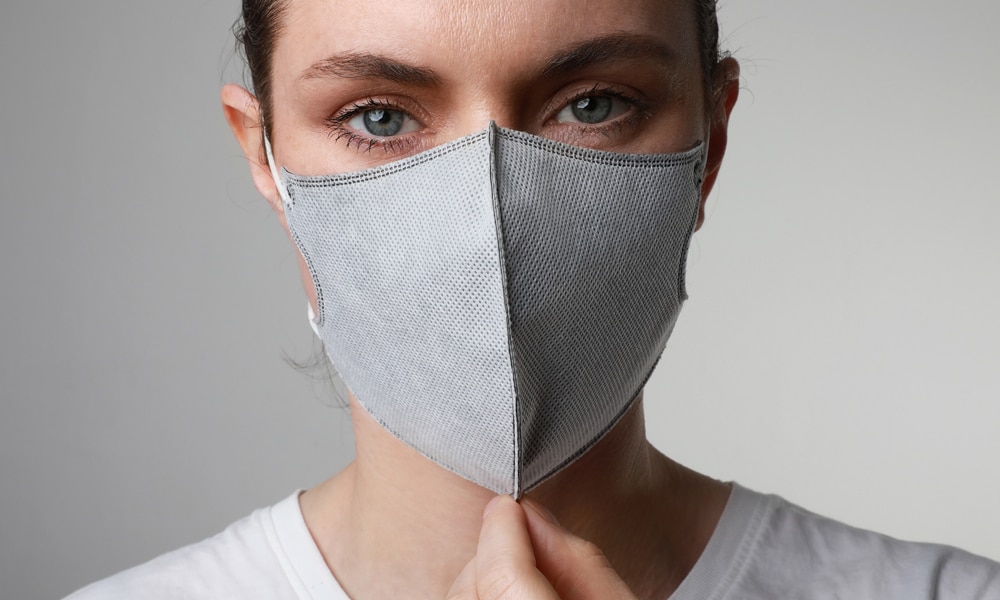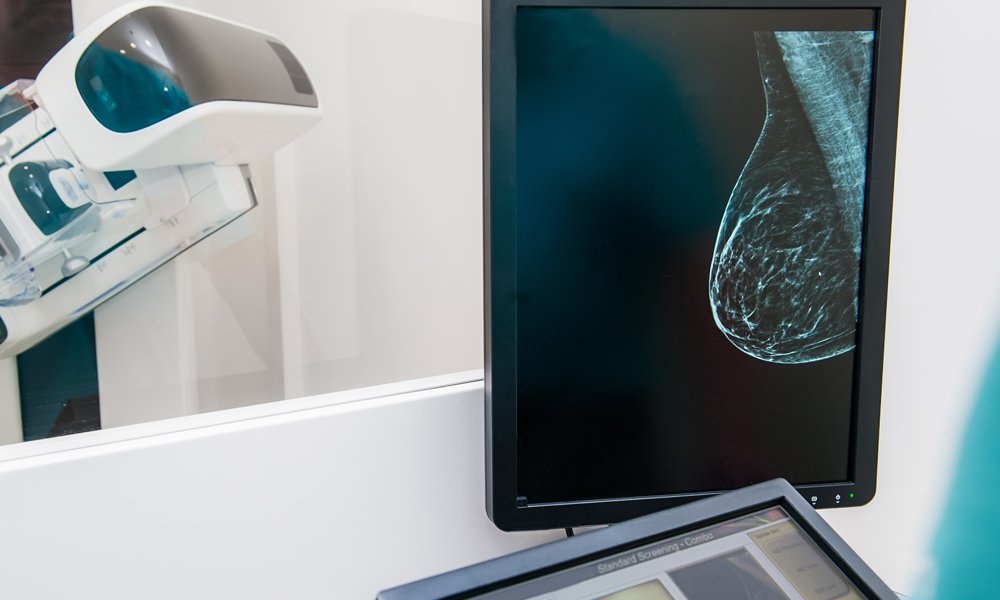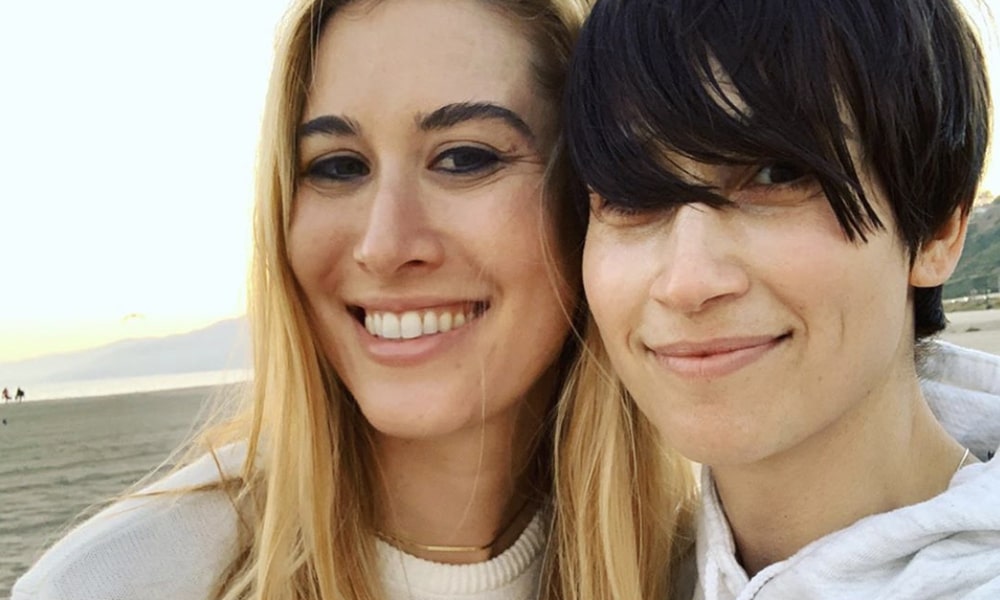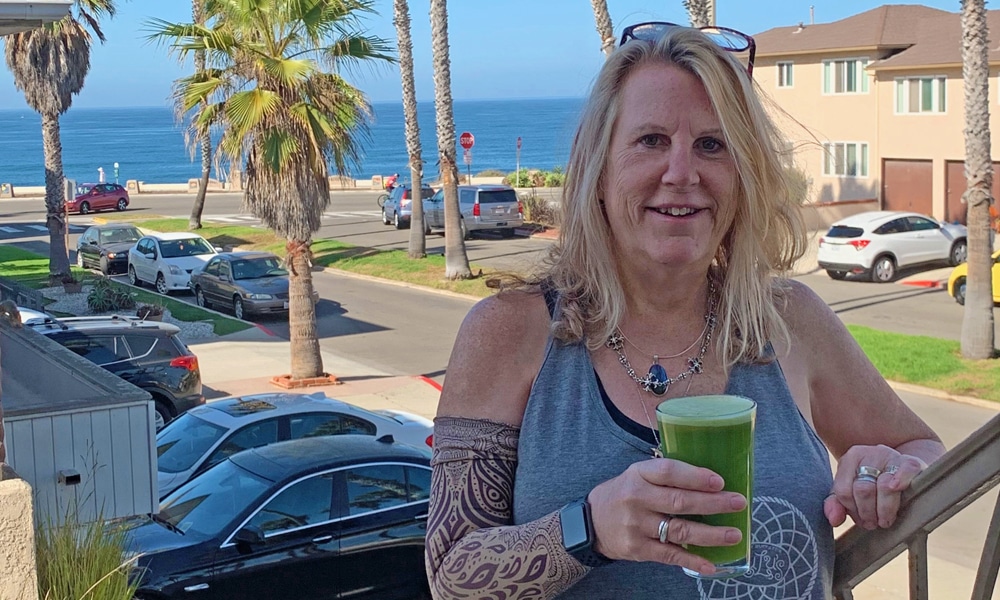Just like so many other aspects of Eastern medicine, the practice of meditation has become more mainstream in recent years. Results of a national health study found that about 9.3 million people in the U.S. used meditation in the past year. Most were women, in the 40-64-year-old age group.[1] What’s the attraction? It’s a safe, inexpensive, DIY form of complementary medicine – and most people find that it works well, especially to help manage the stress, pain, anxiety, and depression that can be associated with breast cancer treatment.
What is Meditation?
Meditation is the more than 3,000-year-old Eastern practice of “thoughtless awareness.” It’s about being more mindful, connecting your body with your mind, and practicing ways to be in the present. If that sounds a bit vague, it is. And that’s part of the beauty of meditation. There are many ways to do it, but the most accepted method of meditation is to focus your attention on a repetitious cognitive activity.[2] The goal is to slow down, stop your racing thoughts about the past or the future, focus on your self-awareness, and stay in the present moment.
Meditation is part relaxation therapy and part behavior modification. It forces you to breathe slowly and deeply, which reduces your heart rate, and blood pressure. (2) It can also reduce cortisol levels by quieting your body’s natural stress response, or the fight-or-flight rush of adrenaline we all have when we’re faced with something terrifying or unpleasant. Meditation is an effective way to clear all the clutter out of your mind, so you can channel your energy into the task at hand.
Meditation Benefits for Health and Breast Cancer
So many of us spend our time and energy focused on what happened in the past, and worrying about what might happen in the future. That’s an especially common theme when you’ve been diagnosed with breast cancer. You’ve probably made millions of mental lists of all the bad things you’ve eaten, or the times you skipped a workout and wondered if that’s the reason you have cancer. You’ve probably also spent countless hours worrying about the potential effects of your treatment, and the what-ifs.
That’s so very normal, and it’s one of the reasons you should consider meditation. It forces you to appreciate and be grateful for where you are today. That simple act of freeing yourself from worrying about things out of your control is so powerful for your mind, which in turn helps your body to heal and move forward.
Meditating for short periods, about 15 minutes twice each day has been shown to have a range of health benefits including a reduction in pain and inflammation, less fatigue, better sleep, and improvement in hot flashes. [3][4] Many studies have also examined the mental health benefits of meditation. Researchers have seen improvements in stress, anxiety, and depression, similar to those with antidepressants, but without the side effects. In one 12-week study on more than 300 breast cancer survivors, those who attended a once per week 2-hour mindfulness meditation and stress reduction program improvements in all of the above, as well as a reduction in their feelings of fear of cancer recurrence.[5] So maybe it’s not a complete surprise that Dr. Kristi Funk’s dedicated an entire section of her annual Cancer-Kicking! Summit to the health benefits of meditation.
How to Meditate
There are many different types of meditation but all are focused on breathing and redirecting your thoughts. Here’s a quick rundown of three popular forms:[3]
- Transcendental meditation, or TM – is the most common type of meditation. To do it, you to choose a word, phrase, or mantra, and just breathe quietly and deeply while you focus on that one thought. If other thoughts enter your mind, acknowledge them, but return to your mantra.
- Mindfulness meditation – in this method of meditation you focus on your breath, and then on each individual part of your body – toes, feet, legs, arms, etc. and how each feels as you tense each part, relax and breathe.
- Sahaja yoga meditation teaches you to achieve a state of self-realization and mental, physical and emotional balance by tapping into your inner energy. Unlike the other forms which require chanting or movement, this type of meditation is focused only on self-awareness and inner energy. It’s considered the ultimate form of thoughtless awareness.
Getting Started
You can practice mediation on your own by unplugging and just sitting quietly in a chair or lying on the floor for 15 minutes. Focus on directing your thoughts to a mantra, and on your breathing. Try to clear away all thoughts so you stay focused on your breath.
Most people find that meditation is easier to do when it’s “guided”. That means a trained practitioner is talking you through the meditation exercise. It’s especially helpful if your mind wanders easily because it helps keep you focused. There are many guided meditation apps available, and they’re a great place to start. Some are even free. Most offer a chance to try out a few guided meditations for free, with a subscription fee for more additional offerings. Some popular ones include:
Another option to learn how to meditate is to attend a class or work with a practitioner one-on-one. This can be especially helpful if you need more guidance, and appreciate group support. Dr. Kristi Funk’s monthly Cancer-Kicking! Tuesdays also has a dedicated 2-hour meditation event where you can learn all about mindfulness. Best yet, it’s via Zoom so you can join from anywhere.
In-person sessions are usually longer than what you might do on your own, which can be helpful and more beneficial. Some also provide a workbook with exercises you can do at home in addition to class. Others may combine a yoga program which can also have other types of benefits.
The Bottom Line
Meditation is something everyone can benefit from, whether you have breast cancer or not. No matter how you do it – at home, via an app, or in a class, you’re pretty much guaranteed to experience benefits (6) without any side effects. Try various types and techniques until you find what clicks with you, and be prepared to enjoy the mind and life-changing benefits of meditation.

